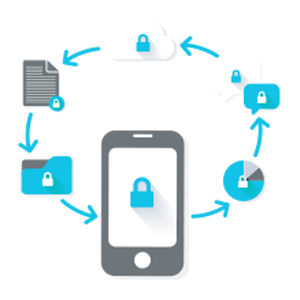Worldwide, people are moving away from traditional devices like PC and laptops and are increasingly using mobile devices like cell phones and tablets. According to International Data Corporation (per Press Release dated 26th Oct 2016), smartphone shipment increased by 1.0% in 3Q2016 to 362.9 million units as compared to 3Q2015. On the contrary, worldwide PC shipments (per Press Release dated 11th Oct 2016) declined by 3.9% to 68 million units in 3Q2016 as compared to 3Q2015.
With increasing usage of mobile devices, managing information flow to and from these devices is a big responsibility. The world is transforming digitally, and with easy connectivity and data services, these devices are no longer limited to calls and text messages. Smartphone features like camera, applications, games and other social media platforms make these devices susceptible to hacking and data theft. The strategy or solution to administer these mobile devices is called Mobile Device Management (MDM).
With Mobile Data Management solutions, corporates can reduce the cost of providing mobile devices to its employees and can encourage them to opt for BYOD (Bring Your Own Device). This way, the employee can manage official and personal work using a common device and the company can be assured of data security.
Certain core features which an MDM solution provides to enable corporates to administer devices, support users and centrally manage devices across all company sites.
- Quick registration:
An MDM solution comes with easy enrollment options of new devices. Mobile devices can be registered using QR code, website login or even text messaging.
- Easy configuration:
Common settings for the enterprise mail, wireless settings, VPN, Printer, etc. can be saved on cloud and easily configured across multiple devices. MDM also allows the company to create groups of employees and store parameters specific to each group.
- Security:
MDM enables the company to enforce certain security policies such as auto-lock settings, passcode and device restrictions such as disabling the phone camera. Some departments like the trading floor or research division have sensitive information which cannot be leaked. Similarly, companies may need to restrict usage of personal emails to block unauthorised mails and sharing of information. These objectives can be met using the security features of app blocking and website blacklisting.
- Geo-Fencing:
Geofencing is a feature which uses the location or GPS of the device to activate or deactivate certain features. For example, a company may want to disable the usage of the camera within office premises, but the employee can use the camera when he is not at work. This feature also allows companies to send certain triggers or alerts to the employees within a specific location.
- Remote Access:
MDM allows the administrator to send triggers to the registered mobile devices remotely. This is particularly useful in case of hacking, theft or loss of the device. An administrator can remotely wipe out the data, and lock the device; thus securing sensitive information.
- Collecting Information:
MDM regularly collects information of registered mobile devices for determining performance issues and providing solutions for the same remotely. It can also collect information on the hardware such as memory storage, hard drive specification, installed apps, etc.
Mobile Device Management(mdm) does not only help the corporates to regulate the mobile devices but also manage its mobile workforce working from remote locations and provide instantaneous support.



